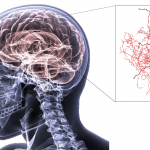A layer
(Science: molecular biology) right handed double helical dna with approximately 11 residues per turn. Planes of base pairs in the helix are tilted 20 deg away from perpendicular to the axis of the helix. Formed from B dna by dehydration.
You will also like...

Community Patterns
Learn about community patterns and the ecological factors influencing these patterns. Revisit some of the ecosystems you've learned about earlier to learn more about the possible impacts of natural and human-induced environmental changes...

Digestion and Absorption of Food
The gastrointestinal system breaks down particles of ingested food into molecular forms by enzymes through digestion and then transferred to the internal environment by absorption. Find out more about these processes carried out by the gastrointestinal system through this tutorial...

Leaves
Leaves are the major photosynthetic organ of a plant. Apart from that, they are also crucial to water movement. In this tutorial, various plant processes are considered in more detail. It also includes topics on leaf arrangements, leaf types, leaf structure, leaf color, abscission, and importance to humans...

Movement of Molecules Across Cell Membranes
Molecules move within the cell or from one cell to another through different strategies. Transport may be in the form of simple diffusion, facilitated diffusion, active transport, osmosis, endocytosis, exocytosis, epithelial transport, or glandular secretion. This tutorial provides elaborate details on each of these mechanisms. Find out how. ..

Cell Structure
A typical eukaryotic cell is comprised of cytoplasm with different organelles, such as nucleus, endoplasmic reticulum, Golgi apparatus, mitochondria, and so on. The cellular contents are surrounded by a double layer, cell membrane. These cellular structures and cell junctions are elaborated in this tutorial...




